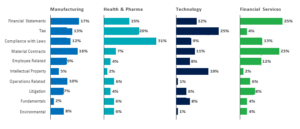By Damon N. Vocke and Mark A. Bradford
As if COVID-19’s initial challenges related to claims, renewals, and exclusions, all while operating in a remote environment, were not enough, ceding and assuming companies face risk associated with their counterparties’ ability to survive the proverbial economic storm. This risk will only be heightened if other severe events develop in the near term including CAT losses or cyber occurrences. As business moves forward from and through the pandemic, insurance and reinsurance professionals need to pay attention to the solvency of counterparties, including captives and fronting carriers, in light of the stress that COVID-19 will impose on claims and investment portfolios.
Doing business with a counterparty operating in or near the zone of insolvency can unwittingly create risk, especially because the amounts associated with an insurance insolvency are often significant. E.g. Jo Ann Howard & Assocs., P.C. v. Cassity, 395 F. Supp. 3 1022, 1194 (E.D. Mo. 2019) (entering $102 million judgment in favor of receiver of insolvent insurance company following four week bench trial which followed appellate reversal of prior jury trial that had resulted in $390 million verdict in favor of receiver). In one instance, an insurer or reinsurer may face claims that it precipitated an insolvency as a result of not having timely honored claims. While in another, insurers and reinsurers, alike, may face accusations of disguised insolvency to perpetuate a counterparty and thereby further the solvent company’s own business interest to the detriment of the insolvent company’s creditors.
The term “zone of insolvency” is somewhat amorphous, and leading courts have struggled with a precise definition. Generally speaking, the term means a distressed company with a deteriorating fiscal condition, minimal reserves, marginal surplus, and little ability to invest in future operations. Think of a company who might not be able to obtain a loan from a commercial lender or a company whose reserves and financial position might cause a regulator heartburn during an examination. While insolvent counterparties are not easy to spot, and there is often at least some plausible deniability, claims and account executives may hear stories from their counterparts or senior personnel may have learned that a counterparty has taken a large hit or is fighting a bet the company series of claims.
Beyond claims that a transaction or course of conduct caused or disguised an insolvency, struggling companies create risk to the extent that state insurance codes and federal bankruptcy law allow receivers and trustee to void payments made within a certain time period, typically three months to a year depending upon the jurisdiction, preceding an order of liquidation or rehabilitation. Receivers sometimes have years to initiate proceedings to claw back payments such that a company who thought its books were settled could face claims down the road. Creditors similarly may have claims under state law to claw back payments. E.g. Gen. Fidelity Ins. Co. v. WFT, Inc., 837 S.E.2d 551, 556-57 (N.C. Ct. App. 2020) (affirming judgment in favor of creditor of dissolved company). If a counterparty transfers its assets, dissolves, or is placed into receivership, it makes sense to immediately evaluate what claims may be brought against the insolvent counterparty and how to make claims against the insolvent estate in any state receivership or federal bankruptcy proceedings, in the event one is opened, in addition to considering defensive posture.
Third-party liability claims can ensnare.
Aiding and abetting is a powerful and often utilized tool in a receiver’s, bankruptcy trustees’, or creditor’s kit. Counterparties, including reinsurers, and professional advisors such as actuaries, attorneys, accountants and consultants are prime targets for third-party liability claims even if their conduct or advice was not the reason for the insolvency. E.g. Stewart v. Wilmington Trust SP Servs., Inc., 112 A.3d 217, 320-21 (Del. Ch. 2015) (sustaining certain aiding and abetting claims brought by liquidator of captive insurer while dismissing others), aff’d 2015 WL 6672222 (Del. 2015). Liquidators and creditors may bring claims, either in concert or in competition with one another, targeting the going concerns who have the ability through their own funds or insurance coverage to satisfy a judgment.
Choice of law matters.
Some jurisdictions limit the duties owed to creditors or at least restrict direct claims, as opposed to derivative actions, by creditors. E.g., North Am. Catholic Educ. Programming Found., Inc. v. Gheewalla, 930 A.2d 92, 101-02 (Del. 2007) (holding creditors could not assert direct action). However, other jurisdictions impose obligations before the moment of insolvency when the company was operating in the ill-defined and difficult to pinpoint “zone of insolvency”. For example, Vermont, which is one of the leading domiciles for captives with over 575 active captives and over $22 billion in annual gross written premium, imposes a duty to creditors “not only when the corporation is technically insolvent, but also when the corporation operates in the vicinity or zone of insolvency.” Gladstone v. Stuart Cinemas, Inc., 178 Vt. 104, 117 (Vt. 2005).
A counterparty may be domiciled in a jurisdiction other than where its personnel are located. It is a good idea to take stock of counterparties’ domiciles and form of organization, e.g. stock company, mutual, reciprocal, etc., including those operating domestic or foreign captives, and if necessary, to engage counsel to evaluate what duties may be owed and to whom.
Insolvency Can Create Competing Claims and Extended Statutes of Limitations.
Generally speaking, insurance companies are excluded from federal bankruptcy and are rehabilitated or liquidated under the auspice of state receivership statutes. This can create a patchwork of potential laws and competing liquidating authorities each laying claim to assets or claims. For example, an insolvent counterparty may have as its parent a non-insurance holding company, or in the case of a captive a non-insurance insured, who would be liquidated under the bankruptcy code and one or more operating entities that write insurance or reinsurance and that would each be subject to liquidation in their state of domicile. In re First Assured Warranty Corp., 383 B.R. 502, 521 (Bankr. D. Colo. 2008) (holding that bankruptcy court had jurisdiction over non-insurance affiliate) (“domestic insurance companies are ineligible for bankruptcy relief.”) In these types of competing claimant situations, it is important to observe contractual formalities and obtain releases from all potentially interested parties if possible. See Stephens v. Nat’l Distillers & Chem. Corp., 70 F.3d 10, 12 (2d Cir. 1995) (vacating and remanding for additional proceedings regarding claim by liquidator of reinsurer against non-insurance holding company for return of dividend payments).
Receivership can also extend the time in which a counterparty’s liquidator can assert claims. Fla. Stat. §631.042 (tolling and extending statute of limitations as to claims by receiver of insolvent insurance company); In re Diamond Benefits Life Ins. Co., 907 P.2d 63, 67 (Ariz. 1995) (holding that insurance receiver pursuing claim for conversion of company funds was exempt from statute of limitations). It may also allow a receiver to void arbitration and forum selection provisions. Taylor v. Ernst & Young, L.L.P., 958 N.E.2d 1203, 1211 (Ohio 2011) (holding that insurance liquidator was not bound by insolvent company’s arbitration agreement). This means that a company whose counterparty goes into rehabilitation or liquidation may face claims years beyond what may have been anticipated or reserved and may do so in a forum that was not anticipated at the time of contracting. Against this background, it may be well worth exploring options with liquidators early in the receivership process such as a commutation or a loss portfolio transfer and wrapping such transactions with a general release so as to avoid later claims or issues.
Tips and takeaways.
Medical professional liability, nursing home, business interruption, and director and officer coverage, among other lines, may see increased claim activity as losses develop in relation to crisis and pandemic planning and management and as claims develop against insureds who provide professional or other services to persons inflicted with the novel coronavirus. However, companies principally writing in other lines are not immune to investment losses and credit risk and can be a source of potential counterparty liability.
While each counterparty potentially in the zone of insolvency presents a unique set of circumstances, there are general tips that apply universally:
- Document in writing the arm’s length nature of the relationship and any transactions;
- Make certain to disclose any transactions to regulators that are required to be disclosed and obtain regulatory approval or written buy-in, if possible;
- Avoid deals that seem too good to be true or deals that seem to unduly advantage a counterparty’s insiders at the potential expense of the company or its creditors.

